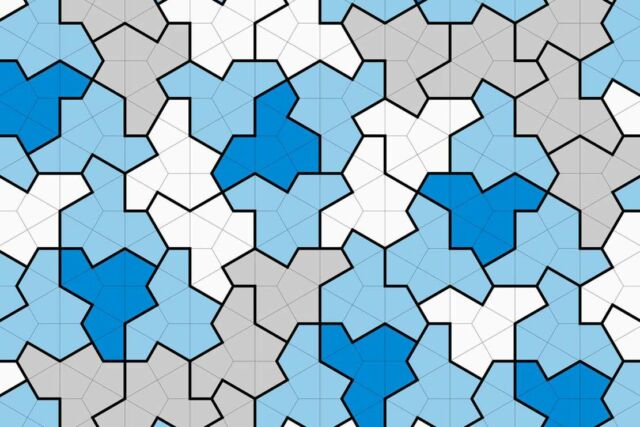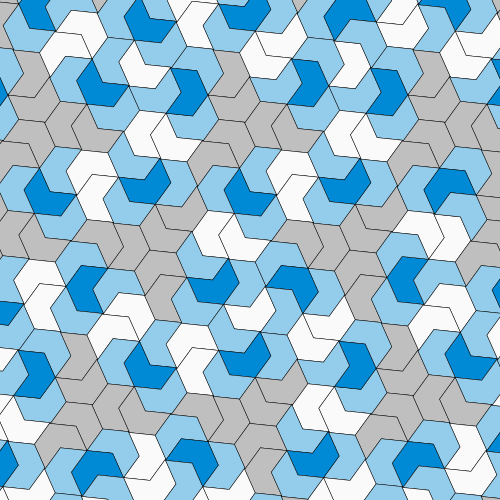
A nearly 60-year-old mathematical problem has finally been solved, by a newly discovered shape.
Scientists have discovered a new shape called “the Hat” that has 13 sides and can tessellate with itself without any repetition, solving a mathematical mystery that has persisted for over 60 years.
This unique shape opens up new possibilities for creating intricate and never-before-seen tile patterns, particularly for use in bathroom design. The Hat’s ability to tessellate without repetition makes it an exciting discovery for mathematicians, designers, and artists alike.
University of Waterloo
This elusive shape is known to mathematicians as an aperiodic monotile or an einstein, a clever pun that takes its name from the German words ein and stein which mean one stone.
“Dave and I had been in touch over the years and we belong to the same old-fashioned listserv for people interested in tiling, a mix of tiling enthusiasts, programmers, and mathematicians,” recalls Cheriton School of Computer Science professor Craig S. Kaplan, who collaborated with Smith, software developer Joseph Myers and mathematician Chaim Goodman-Strauss on the paper that has proven that the elusive einstein exists.
“Dave was on to something big, something historic, but he hit the wall on what he could deduce about this shape by working with paper cut-outs. He knew I had recently published a paper about a related topic for which I developed a piece of software that we could use to understand what his shape was doing. He sent me an email asking, ‘Hey, can you run this through your software and see what happens?’”
source University of Waterloo






Leave A Comment